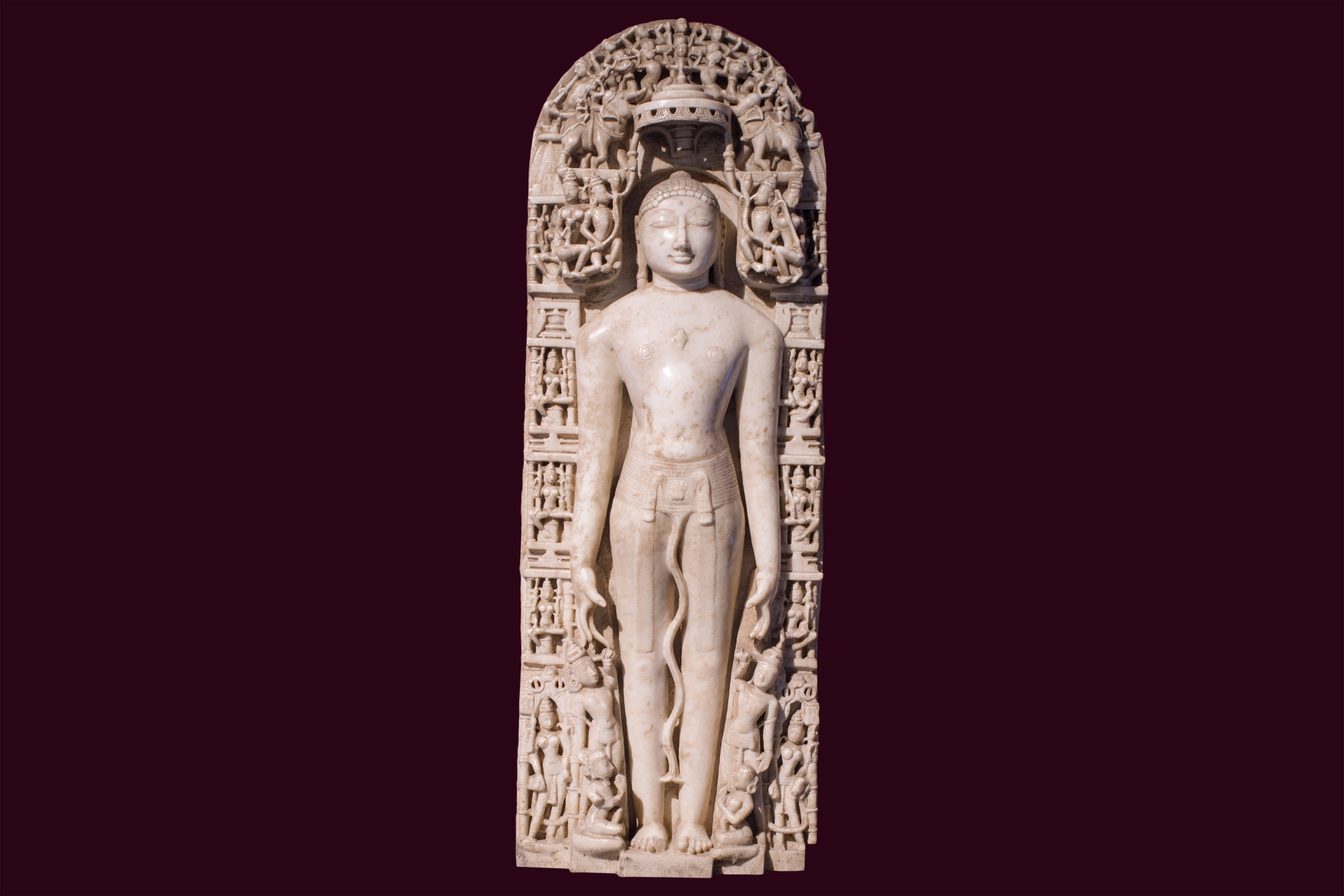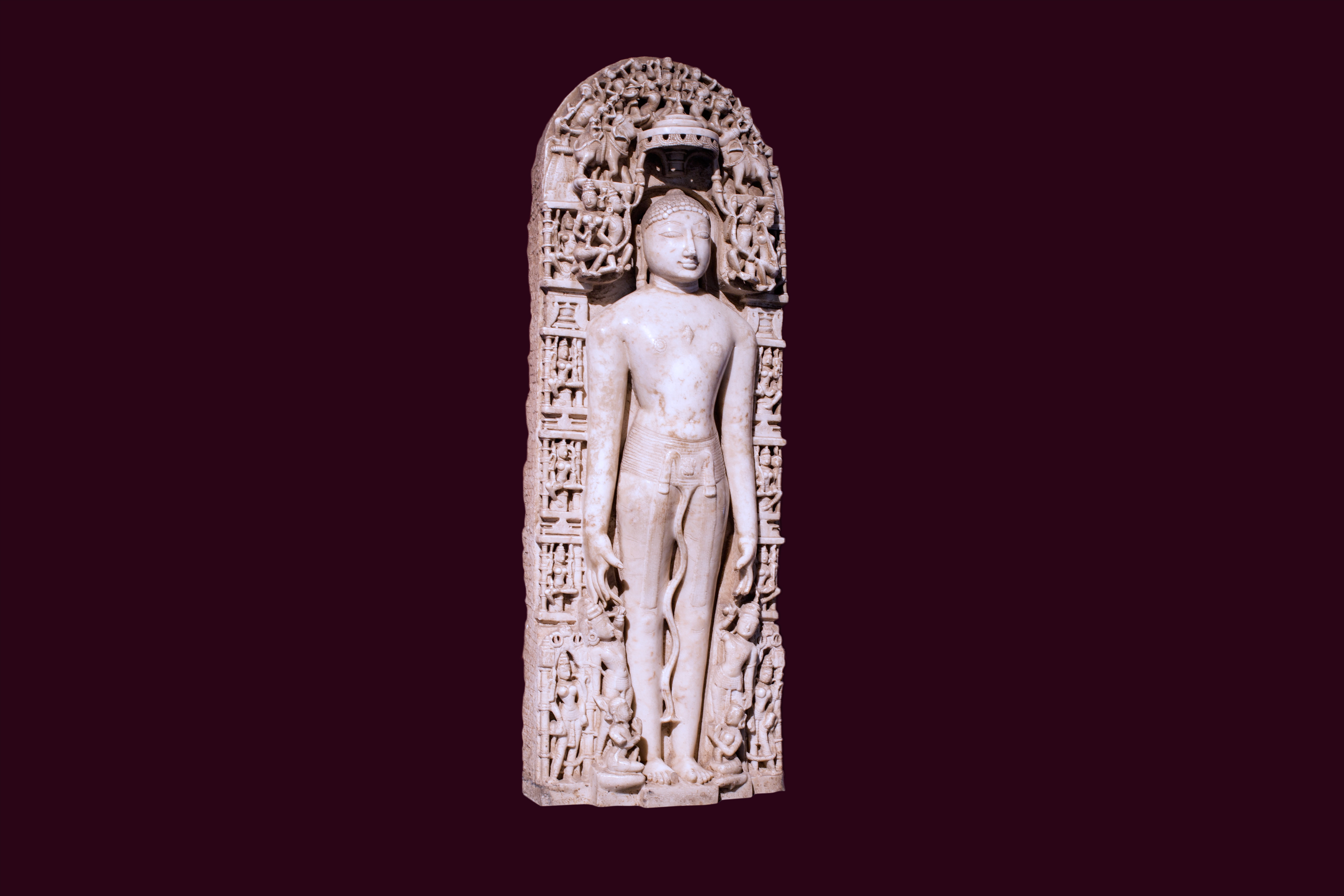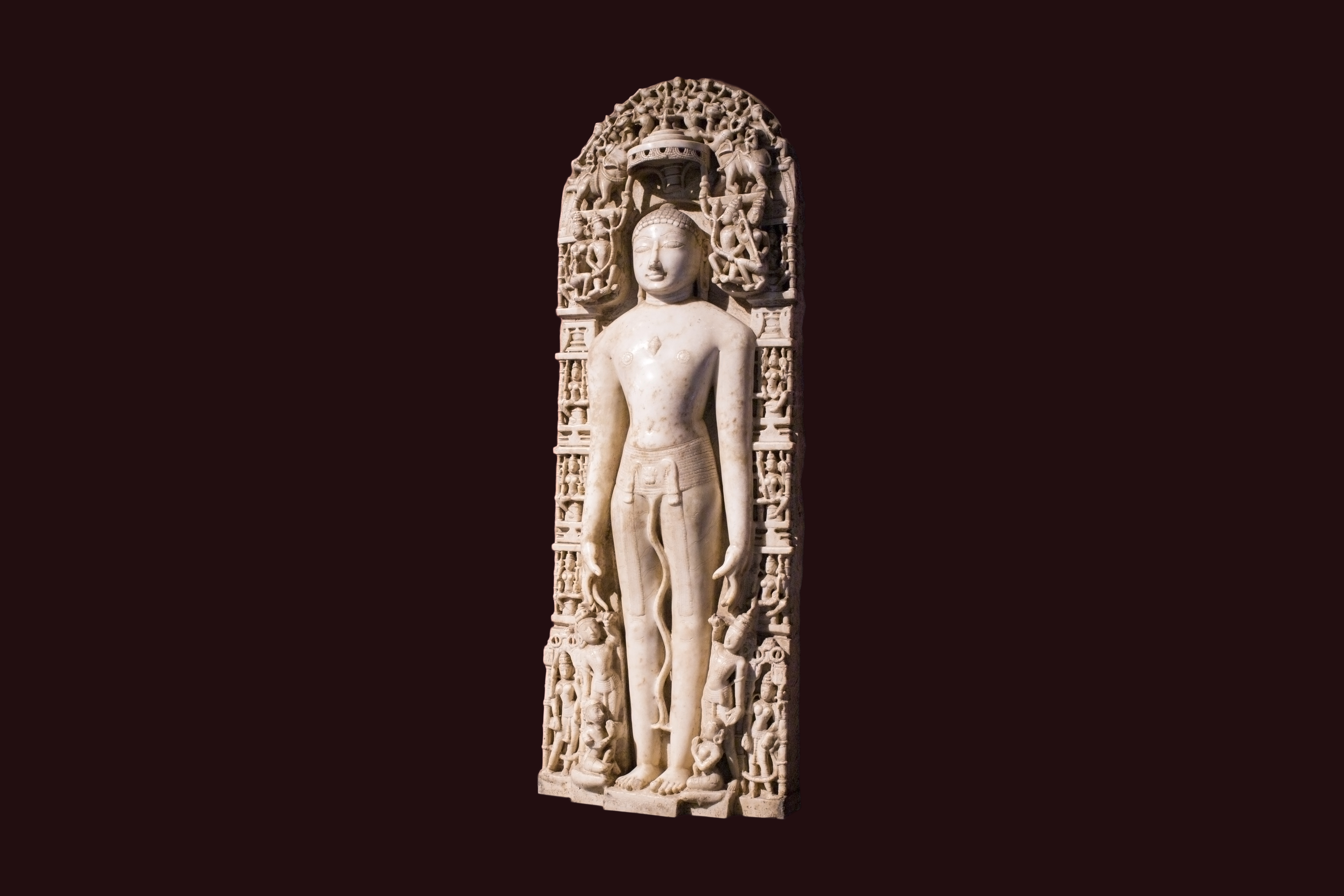Shantinatha, Sixteenth Jain Tirthankara
Original Location: Veraval, Gir Somnath District, Gujarat
Present Location: Chhatrapati Shivaji Maharaj Vastu Sangrahalaya, Mumbai
Date: 1138 CE
Period: Early Medieval
Material: Marble
Objects: Sculpture
Credits: Chhatrapati Shivaji Maharaj Vastu Sangrahalaya, Mumbai
Shree Shantinatha was the sixteenth Jain tirthankara. He is said to be born to King Visvasen and Queen Achira at Hastinapur in the Ikshvaku dynasty. He ascended the throne when he was 25 years old and became a Jain monk at the age of 50 years when he started his penance to become a siddha or a liberated soul. The place of origin of this sculpture points to the spread of the Jain religion.
This sculpture is one of the early intricately carved images of Shantinatha. Here, he stands fully calm and composed, with his eyes closed. He is depicted in the Kayotsarga pose, which literally means "dismissing the body”. In this, the person gives up one's physical comfort and restricts body movements leading to a steady state either in a standing or other posture and concentrating upon the true nature of the soul. There is a shrivatsa emblem on his chest which is an important part of Jain iconography and distinguishes it from Hindu and Buddhist sculptures. There is an elaborate halo or the prabhavali which is inset with a number of human figures. A donor couple is seated in prayerful supplication on either side of his feet. The chauri bearers elegantly wave their chauris, standing behind the donors, right under the hands of the Jina.
The tirthankara has a very revered place in the Jain religion. He is the great teacher and a savior, who has conquered the cycle of death and rebirth and made a path for others to follow. The tirthankara's teachings form the basis for the Jain canons.
 Government of Indiaa
Government of Indiaa




 Recognizing the ongoing need to position itself for the digital future, Indian Culture is an initiative by the Ministry of Culture. A platform that hosts data of cultural relevance from various repositories and institutions all over India.
Recognizing the ongoing need to position itself for the digital future, Indian Culture is an initiative by the Ministry of Culture. A platform that hosts data of cultural relevance from various repositories and institutions all over India.
